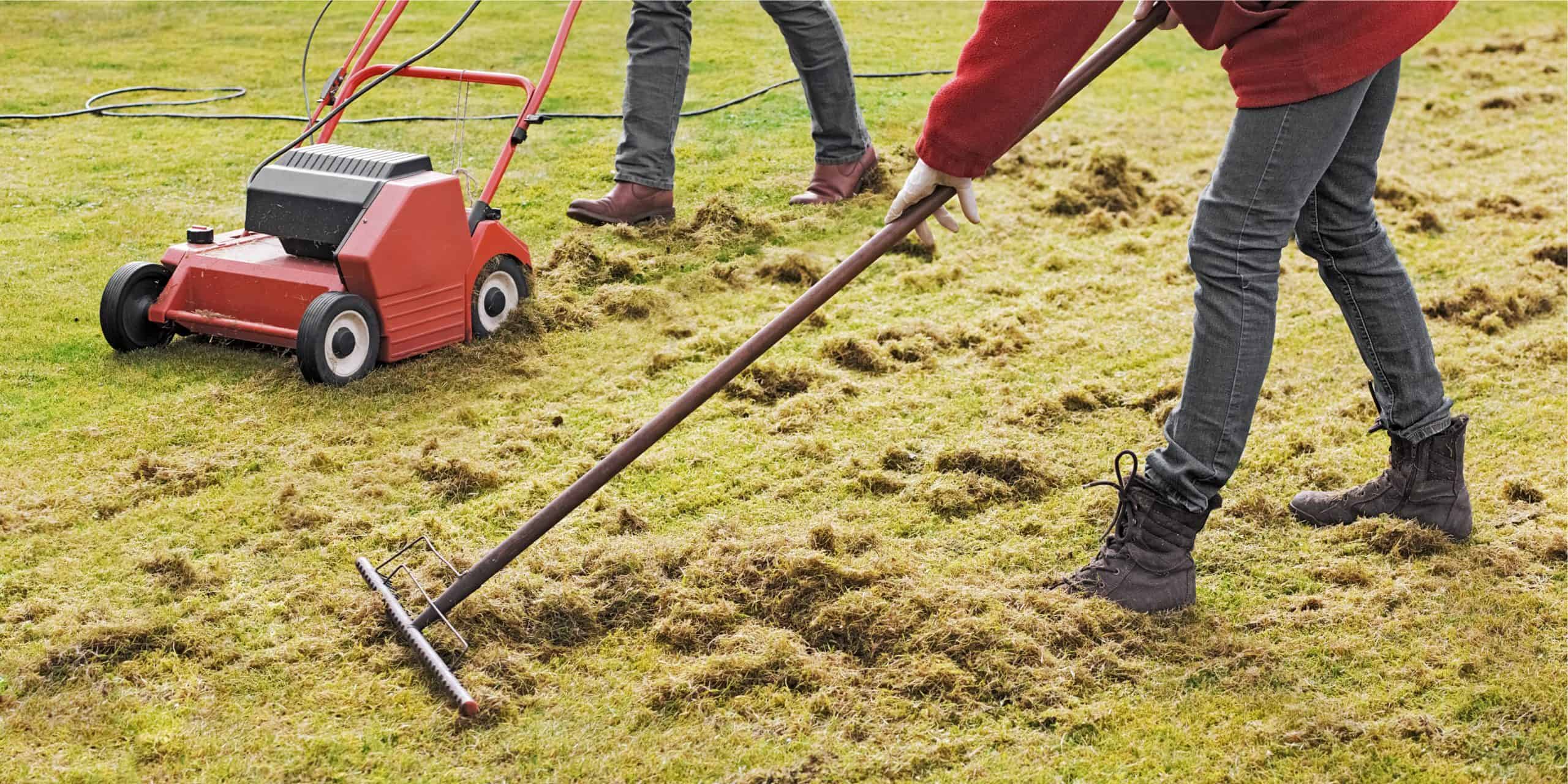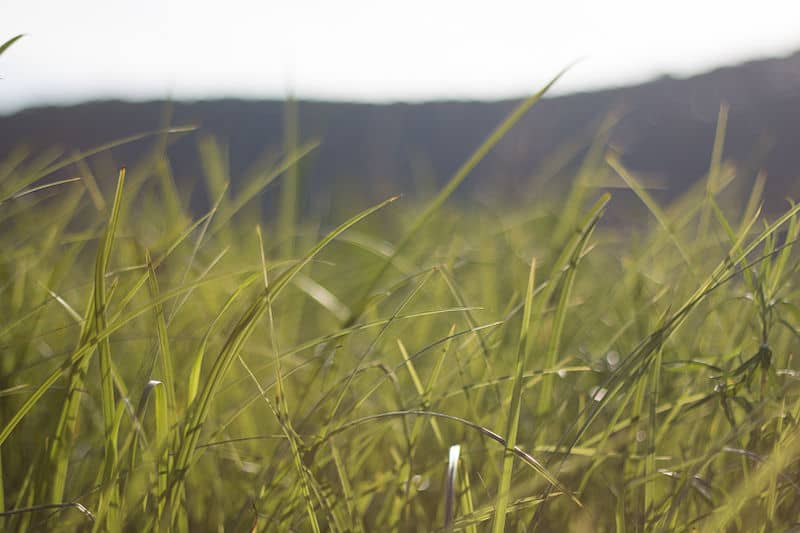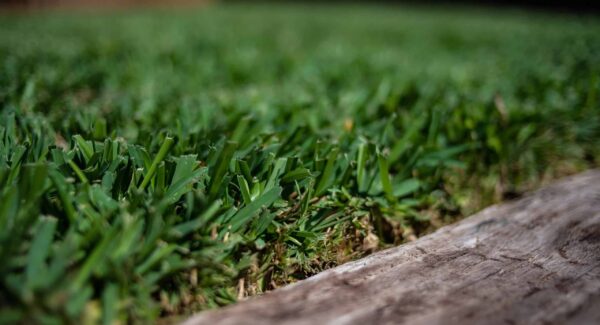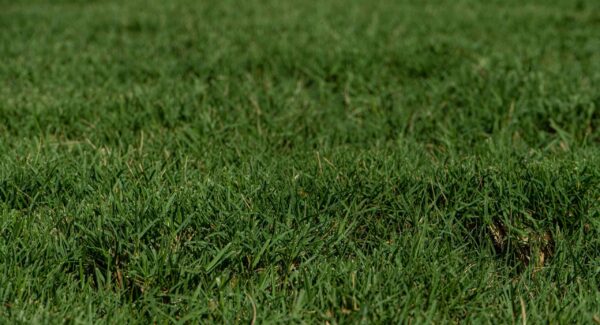Everything You Need to Know About Thatch

Managing thatch in your lawn is crucial to achieving perfectly maintained grass. Learning about beneficial & harmful amounts of thatch and how to remove thatch properly will keep your lawn beautiful and healthy.
What is Thatch?
Thatch is the layer of intermingled dead and living organic matter that accumulates between the surface of the soil and the actively growing grass. It occurs naturally with turfgrass and can be both beneficial and detrimental, depending on the thickness of the thatch. Thatch is composed of organic matter like dead leaves, crowns, roots, and rhizomes – All of which need to be removed routinely.
How does your lawn get thatch?
Thatch accumulates when your lawn can’t break down debris as fast as it collects. Some parts of grass are more resistant to decay than others, which varies based on the type of grass in your lawn. Lignin, a decay-resistant compound found to comprise about a quarter of thatch’s makeup, is one of the leading factors of thatch buildup. While excessive thatch can be detrimental to your lawn, it’s very beneficial in the right amount, making your grass more wear-resistant.
Good Thatch
Thatch is beneficial when the thickness is around half an inch. It decreases soil erosion and makes the turf more resistant to heavy traffic. Zoysia grasses have more lignin, making these cultivars more susceptible to thatch and more wear-resistant than other varieties. It also provides insulation to protect the soil and turfgrass from extreme temperatures and fluctuations in moisture levels better.
Bad Thatch
Adverse side effects start when thatch is an inch or thicker. Thatch that is too thick restricts the movement of air, water, fertilizer, and nutrients to the roots, which can dry out and starve the grass. Moist grass can also harbor fungi, which can cause disease to the grass leaves, and in some cases, the roots & rhizomes. In general, thick thatch weakens the grass, makes it more susceptible to injury, and makes maintenance more challenging.

How De-thatching Can Improve Your Lawn
If your lawn is patchy, dry, and in dire need of rejuvenation, you may want to consider removing the thatch from your lawn. Thatch sits right underneath the surface of your grass and suffocates the rest of your lawn. Thick thatch prevents grass from receiving proper nutrients, air, and water. If not removed, it will continue to build up, blocking vital nutrients to your lawn.
Excess thatch causes the roots of your grass to stay closer to the surface, requiring you to water more. This will lead to more patchy areas in your lawn and create a safe harbor for pests that will eat away at your grass. Removing thatch from your yard will get rid of that blockage and allow nourishment to penetrate below the surface of your lawn, reaching the soil & roots. The increased nutrition will help the roots of your grass grow deeper and create a healthier lawn environment.
Texas is prone to prolonged periods of drought, creating the perfect environment for harmful thatch to ruin your yard quickly. Reducing your thatch makes your lawn more prepared to handle the most extended Texas droughts.
How to Dethatch Your Lawn
You can remove the thatch in your yard in several ways. The simplest way is to get a thatch rake explicitly made to get below the surface of your lawn and pull out the thatch.
If you want the process to go faster, dethatching devices are made only to remove thatch from your yard. Dethatcher machines are typically called vertical mowers, verticutters, dethatchers, or power rakes.
They are easy to use and find or rent from most equipment rental outlets & home improvement stores. You should never attempt to remove the entire thatch layer at once. Avoid dethatching when the soil is wet. You shouldn’t be dethatching the lawn regularly, only when needed.
By removing the thatch, you will open up your lawn to receive the nutrients it needs to thrive. Your grass will be able to grow fuller and greener, improving your lawn’s overall appearance.
Prevention and Management
To prevent excessive buildup of thatch on your lawn, follow these helpful tips:
- Mow frequently at the recommended mow height for your grass variety
- Keep clippings on the lawn (if less than a 1/2 in thick)
- Reduce nitrogen fertilization
- Maintain the pH level of your soil
- Aerate when necessary
If you have any questions or are looking for some fresh sod, contact The Grass Outlet today.





